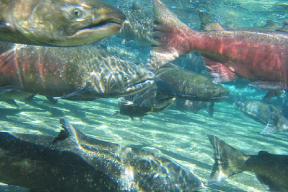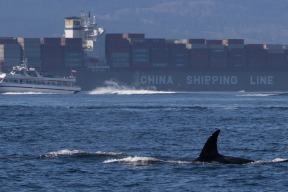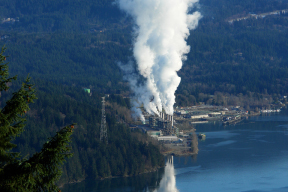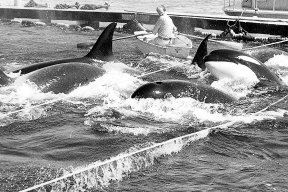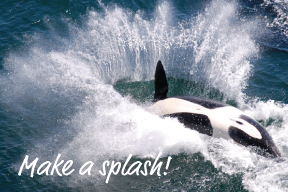As of April 2023, the population numbered only 73 individuals. Extensive research shows that the population is at high risk of extinction if immediate actions are not taken to address the threats that face them.
If we were to lose this population, the impacts would reverberate throughout the Salish Sea ecosystem. There would also be negative consequences for the coastal communities and economies that depend on a healthy marine environment.
Keeping the public informed and creating opportunities for citizens to be involved is a key component in our fight to save the iconic and culturally significant Southern Resident orca population.
Here are ways you can stay up to date and get involved:
![]() You can help right now by making a donation! The support of individuals like you helps us to be responsive and push for the immediate actions needed to bring Southern Resident orcas back from the brink of extinction.
You can help right now by making a donation! The support of individuals like you helps us to be responsive and push for the immediate actions needed to bring Southern Resident orcas back from the brink of extinction.
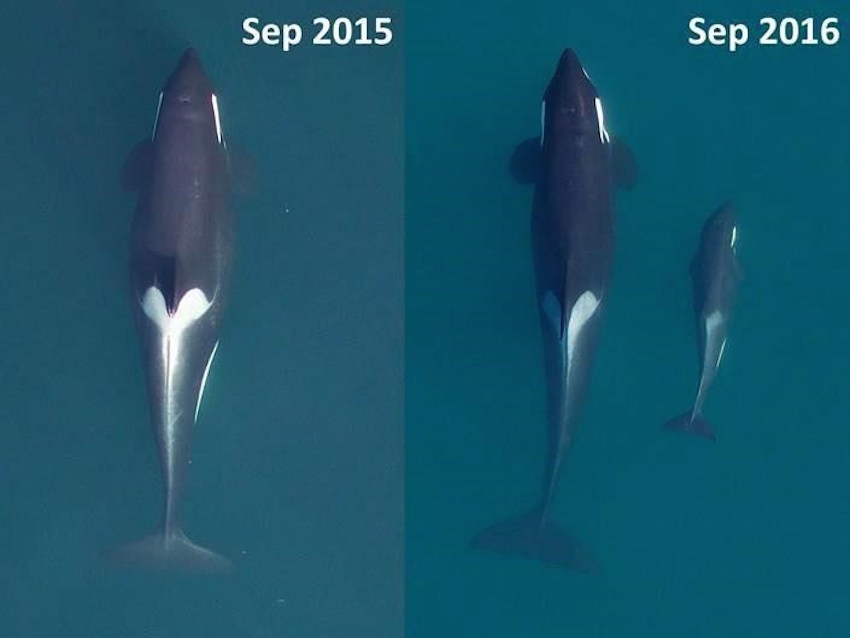
Photo of J-28 (Polaris) in September 2015 when she was pregnant with her son, J-54 (Dipper). The photo of the right shows signs of emaciation, including dents located on her eye patches, a condition caused by malnutrition and referred to as peanut head. Her young son also appears to be very thin. Both mother and calf died in October 2016. Photo Source: NOAA and VanAqua
Endangered Southern Resident orcas are a genetically distinct population that lives off the Pacific Northwest coast. Habitat critical to their survival is found in the Salish Sea and includes the southern part of Georgia Strait, parts of the Strait of Juan de Fuca and Puget Sound. The population is made up of three pods known as the J, K and L pods. Each pod consists of multiple related matrilines and is led by one or more matriarchs.
As of April 2023, only 73 Southern Resident orcas remain.
J-pod: 25 whales
K-Pod: 16 whales
L-Pod: 32 whales
In the past few years the population has experienced the death of several individuals and many pregnancies during this time have resulted in pre-term miscarriages, stillborn calves, or deaths shortly after birth. Research conducted by Wasser et al. between 2008 and 2014 revealed that up to 69% of all detectable Southern Resident pregnancies were unsuccessful. Research has shown that low abundance and availability of Chinook salmon is an important factor in late pregnancy failure.
Studies of the orcas’ physical condition using drones showed that the majority of Southern Residents appear thin and are suffering from malnutrition. Their pods are fragmenting because there is not enough Chinook salmon to eat. Immediate action is needed to address the crisis of this food shortage and the threats of noise pollution, vessel disturbance and toxic contamination, which exacerbate the threat of low food availability.
Southern Resident orcas were listed as endangered under the federal Species at Risk Act in 2003
Since 2003, after much foot-dragging and successful legal action by GSA and our allies, the government released the Recovery Plan in 2008 with a revision in 2011 – with a stronger definition of critical habitat – and the Action Plan in 2017. Both documents were released well after DFO’s mandated deadlines.
» Join the Orca Action Team
Stay up to date on orca protection and actions you can take to aid the recovery of Southern Resident orcas.

